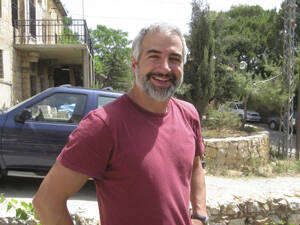Anthony Shadid, 43, a New York Times reporter who had gone secretly to Syria to describe what he called “the suffering that cannot be covered in words,” died on Feb. 16 during an asthma attack while trying to escape to Turkey. Tyler Hicks, a Times photographer, carried his body across the border. Shadid had won two Pulitzer Prizes for The Washington Post. The Times described his “poet’s voice” with “deep empathy for the ordinary person.” During the Arab Spring, he and his family in Lebanon were under constant threat.
Six days later the Syrian government slammed 11 rockets into an apartment building in Homs that it had been bombarding for 19 days. As the inhabitants fled, they were bombed again. At the bottom of the stairs lay 22 bodies, including a 6-year-old boy and two foreign journalists, Marie Colvin, 56, a veteran war correspondent who had lost one eye in Sri Lanka in 2001, and Remi Ochlik, 28, a photojournalist. The day before, Colvin told the BBC that she had watched a 2-year-old baby die in the bombardment. “Our mission is to report the horrors of war with accuracy and without prejudice,” she said, though she always asked herself whether the story was worth the risk. Within a week, 13 Syrian activists were killed trying to help four journalists escape from Homs to Lebanon.
The image of the war correspondent has evolved since William Howard Russell told his London readers after the fatal charge of the light brigade at Sebastopol in 1854 that if the exhibition of valor gives consolation, they need not regret the catastrophe he was about to describe. From the Spanish American War to World War I, Richard Harding Davis was the “glamour boy” correspondent; but when he witnessed the German burning of Louvain in 1914, he suddenly realized that war was not a “game,” but “a war against the defenseless, war upon churches, colleges, shops of milliners and lacemakers; war brought to the bedside and fireside; against women harvesting in the fields, against children in wooden shoes at play in the streets.”
This image of war’s innocent victims has driven generations of correspondents to risk their lives. They include, in World War II, Edward R. Murrow, who, perhaps recklessly, accompanied daily bombing raids over Germany; John Hersey, who revealed the horrors—among them the melted eyeballs—of Hiroshima and who taught Marie Colvin how to write at Yale; and Ernie Pyle, a voice for the ordinary G.I. Forty-five correspondents were killed in Vietnam, including the French historian Bernard Fall, who stepped on a land mine, and Marguerite Higgins, who died later of a disease she contracted in Vietnam.
Meanwhile, according to the Committee to Protect Journalists, 907 journalists worldwide have been killed since 1992, 81 of them in 2011 alone. The largest number, 40 percent, have been murdered for political reasons; 34 percent have died in battle. The deadliest country is Iraq. Afghanistan is tenth. In 2012, 10 have died, five of them in Syria. An international conference in January 2012, organized by the Qatar National Human Rights Committee, called for the systematic publicizing of crimes against journalists, the appointment of a High Commissioner of Human Rights to investigate cases, withholding development aid from offending countries and training for women in danger of sexual harassment.
It seems clear now that Syria is not only strictly limiting journalists’ access to the country; it is also deliberately killing those who are already there. As a result, stories are now datelined Beirut, Cairo and Turkey; some are pasted together from YouTube videos and other Internet sources; and the major media are reluctant to let their bravest reporters continue risking their lives.
On March 17, 1944, Ernie Pyle walked slowly through the miles of wreckage on Normandy Beach, where the tides carried the soldiers’ bodies out to sea, then returned them, buried them in sand and dragged them out again. He came upon two pieces of what he thought was driftwood, but they were the feet of a soldier covered with sand. “The toes of his G.I. shoes pointed to the land he had come so far to see, and which he saw so briefly.” After Pyle had seen so much, he wanted to quit, but he went to the Pacific because the Navy wanted the attention his columns inspired. On April 17 he went ashore on Okinawa, and a Japanese machine gunner killed him.
A few years ago a lone American visitor stood by Pyle’s grave under a tree on the mountain military cemetery outside Honolulu. A car drove up and two Asian women emerged and placed flowers before the stone. Did they know who this man Pyle was? No, they did not know him, they said, but “he came so far.” That is what war correspondents do. They go far away to tell those at home that men and women whom they do not know are dying and that they should care. In the long run, not much can “protect” them from the inevitable risks. But they themselves are willing to die to send the news.








